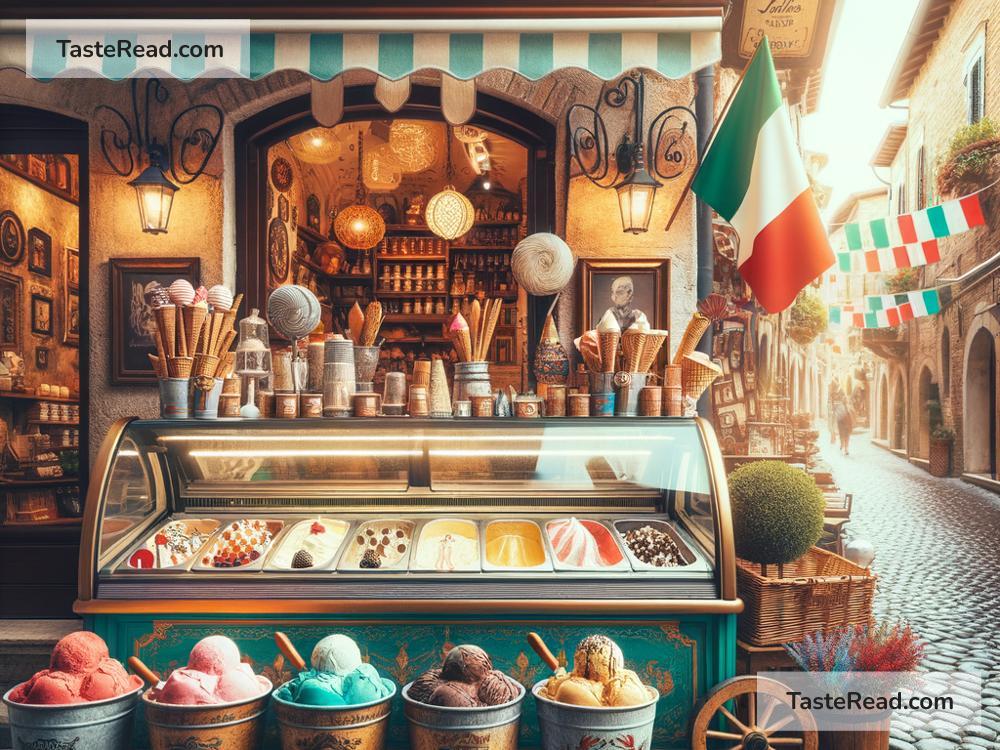The History of Italian Gelato: A Delicious Journey Through Time
When you think of Italy, images of ancient ruins, picturesque landscapes, and mouthwatering food might come to mind. Among Italy’s many culinary treasures, gelato stands out as a beloved treat enjoyed by people of all ages around the world. This creamy and refreshing dessert has a rich history that dates back centuries. Let’s explore the fascinating story of Italian gelato and learn how it became one of the world’s favorite sweets.
What Is Gelato?
Gelato is Italy’s version of ice cream. It’s made with milk, cream, sugar, and a variety of flavors like chocolate, vanilla, pistachio, and fruit. One of the things that makes gelato special is its texture—it’s smoother and denser than regular ice cream. Gelato also has less fat and air compared to ice cream, which gives it a rich and intense taste.
The Origins of Frozen Desserts
The story of gelato starts thousands of years ago, long before Italy became Italy! Historians believe that the idea of frozen desserts first appeared in ancient civilizations. Around 3,000 BCE, the Chinese were known to create icy treats using snow, fruit juices, and honey. Similarly, the Egyptians and Romans enjoyed cooling off with shaved ice flavored with juices and sweeteners.
During the Arab conquest of Sicily in the 9th century, the Arabs introduced “sherbet” to the region. This sweet, granita-like frozen dessert was made with sugar, fruit, and ice. Sicily’s climate, with its proximity to Mount Etna, allowed locals to collect snow from the mountains and store it underground to keep it cool. These early innovations set the stage for what would eventually become gelato.
The Renaissance and the Birth of Gelato
The Renaissance in Italy (14th to 17th century) was not only a time of great art and science but also a period of culinary invention. Gelato as we know it started taking shape during this era. It was made for noble families and royalty and was considered a luxurious dessert.
One key figure in gelato’s history is Bernardo Buontalenti, a Florentine chef and artist from the late 1500s. Buontalenti is often credited with perfecting the first recipe for gelato by combining milk, sugar, eggs, and natural flavors. He presented his creation to the powerful Medici family during a banquet, instantly earning praise for his delicious invention. Buontalenti’s recipe became the foundation of modern gelato.
The Spread of Gelato Across Europe
Gelato quickly gained popularity outside of Italy. During the 17th century, a Sicilian named Francesco Procopio dei Coltelli opened a café in Paris called Café Procope. There, Procopio introduced gelato to French society. His café became a favorite spot for artists, philosophers, and even royalty. Gelato’s smooth texture and delightful flavors impressed guests, solidifying its reputation as an elegant and sophisticated dessert.
Through Procopio’s efforts, gelato became accessible to many people, eventually spreading across Europe. However, it remained a rare treat due to the difficulty of storing ice and making frozen desserts without modern refrigeration.
The Evolution of Gelato
Gelato continued to evolve over the centuries. With the invention of mechanical ice cream makers in the 19th century and the widespread availability of refrigeration, gelato became easier to produce. It was no longer limited to the wealthy but could be enjoyed by people from all walks of life. Small gelaterias, or gelato shops, began popping up in towns and villages across Italy.
By the mid-20th century, Italian immigrants brought gelato recipes with them to countries like the United States, Canada, and Argentina. Gelato became a global sensation, appreciated for its authentic flavors and artisanal preparation methods.
Gelato Today
Today, gelato remains an iconic part of Italian culture and cuisine. Walking through any Italian town, you’re likely to spot gelaterias filled with colorful tubs of gelato in countless flavors. From classic options like chocolate and vanilla to inventive creations like tiramisu and basil-infused gelato, there’s something for everyone.
Modern gelaterias often use traditional recipes passed down through generations, but they also experiment with new techniques and ingredients to keep the art of gelato-making alive. In recent years, dairy-free, vegan, and gluten-free gelato options have become popular, ensuring that everyone can enjoy this Italian treasure.
A Worldwide Favorite
Whether enjoyed on a summer evening by the coast or during a stroll through a bustling city square, gelato has become more than a dessert—it’s an experience. Its rich flavors, creamy texture, and cultural significance make it stand out among sweet treats. From Italy to every corner of the globe, gelato continues to bring smiles to millions of faces.
So, the next time you savor a scoop of gelato, take a moment to appreciate its long journey from ancient civilizations to Renaissance Europe and its status as a worldwide favorite. Gelato is more than food—it’s history, art, and love served in a cone or cup.


